They say imitation is the sincerest form of flattery. Developer Hexworks clearly agree, as Lords of the Fallen isn’t so much a Souls-like as a Souls-clone. Here FromSoftware’s Dark Souls games have been dissected, replicated and faithfully reassembled, resulting in something that’s the video game equivalent of a cover song.
To be fair, it’s not like Hexworks is pretending otherwise. Lords of the Fallen creative director Cezar Virtuzo has straight-up said “we will be Dark Souls 4.5,” and that the ambition is to become the “second reference” for the Soulslike genre behind FromSoftware.
But hey, if you’re going to painstakingly copy another game, why not Dark Souls? This trilogy of punishing dark fantasy adventures altered the trajectory of gaming in the 2010s. Demon’s Souls birthed the genre, the Dark Souls games refined it, and the experience bore fruit in the undisputed all-time greats Bloodborne and Elden Ring.
Many developers have since tried to join the Soulslike party, with one of the first 2014’s Lords of the Fallen. This wasn’t a bad game, though its mediocrity has relegated it to a footnote in the genre. Well, maybe second time’s the charm: Lords of the Fallen is back with the same name, but with a new development team. Technically this is a sequel, but seeing as it’s set a millennia after the events of the original, it’s more of a reboot. Whatever the case, you don’t need to know anything about the original to understand what’s going on.
The history lesson is now over, so let’s get to the million-dollar question.
Is Lords of the Fallen really good enough to be ‘Dark Souls 4.5‘?
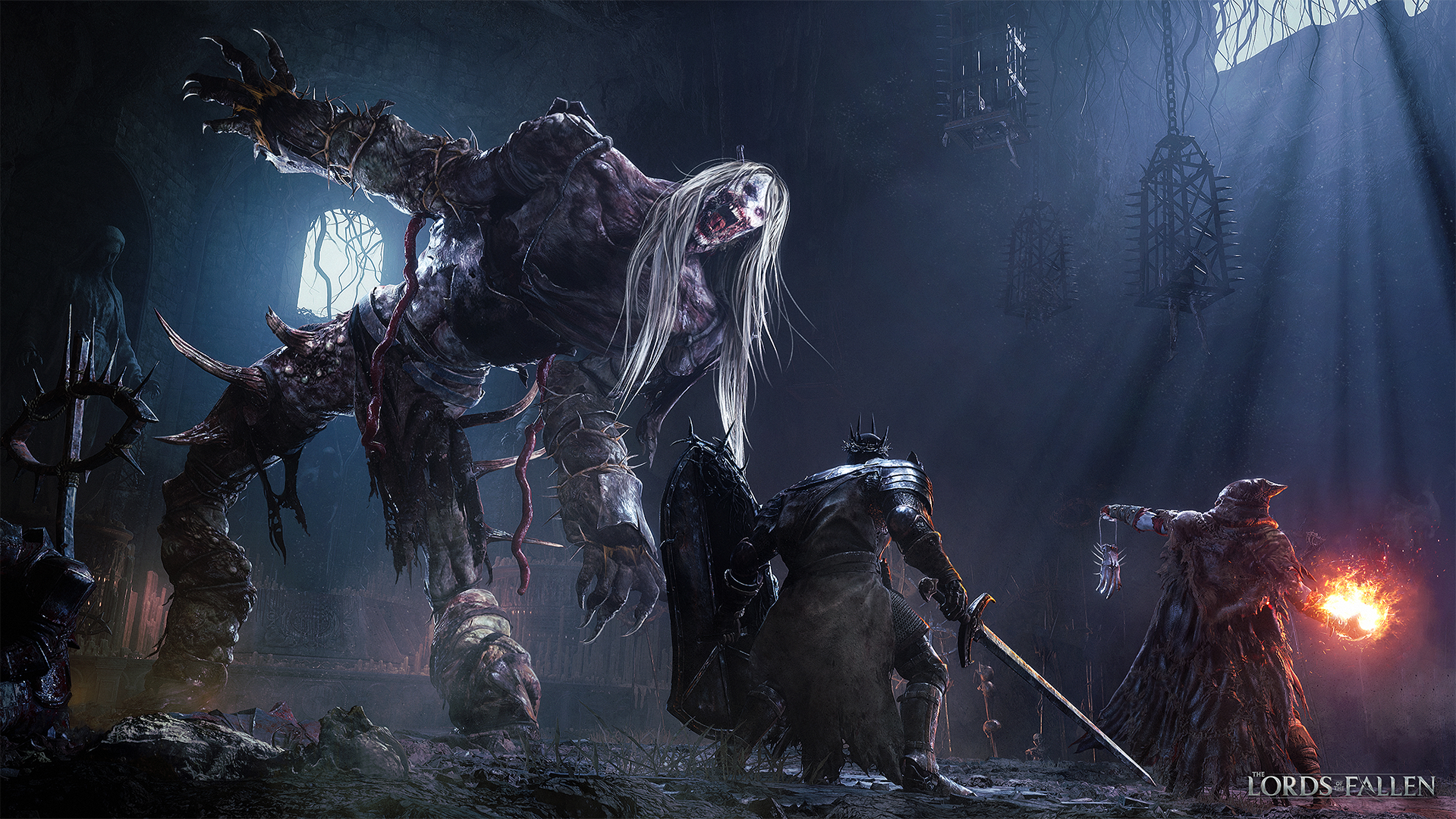
Before I answer that, I want to show off my credentials. I’ve been playing the Souls series since I imported Demon’s Souls on PlayStation 3. Since then I’ve completed all three Dark Souls games, Bloodborne, Sekiro: Shadows Die Twice, the Demon’s Souls remake, and Elden Ring (along with every piece of DLC for those games).
So, it’s with quiet astonishment that I can confirm that, yes, Hexworks has effectively created a brand new Dark Souls game in Lords of the Fallen. I’m as shocked as you are. First up, it runs smoothly, looks great (roughly graphically equal to Bluepoint’s Demon’s Souls remake) and has excellent sound design.
The fundamentals of the Soulslike are all intact: you trudge through broadly linear circular levels, battle groups of enemies, and face off against an intimidating boss. Death means dropping your souls (here “vigor”), returning to a bonfire, and you have one chance to reach that spot and retrieve them before they vanish into the ether.
Combat has also been transplanted wholesale from Dark Souls with button mapping faithfully recreated, meaning the muscle memory burned into my brain from hundreds of hours of triumph and misery instantly sparked back to life.
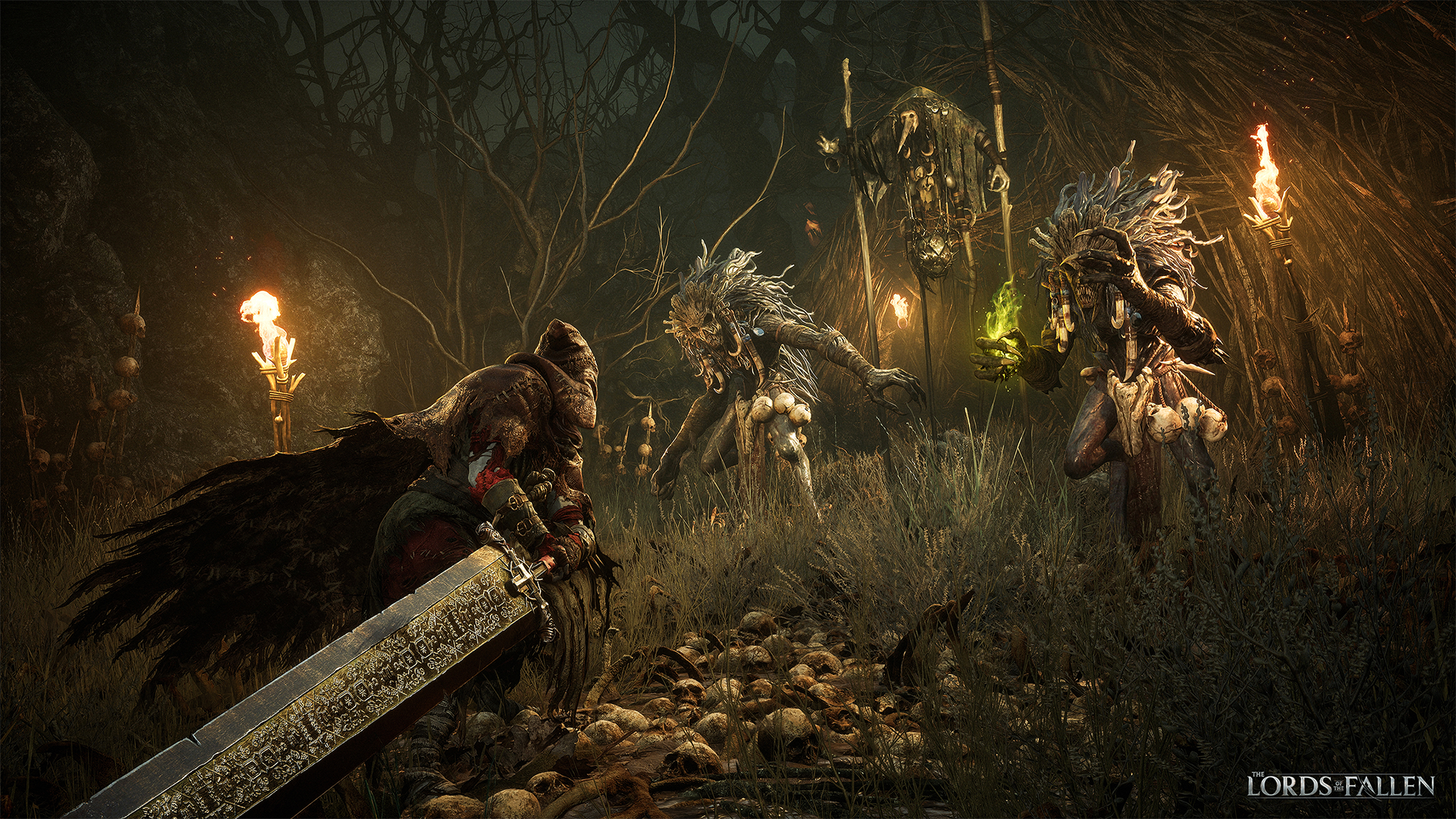
Proof that Hexworks had nailed it arrived for me around five hours into my playthrough. I was squaring off against a boss who herself wasn’t particularly complicated, but could summon an endless stream of adds that stun-locked me to death. After watching my hardy adventurer slump to the ground 10 or so times, that good ‘ol Soulslike red mist descended. I was howling with annoyance, gritting my teeth, and insisting to an imaginary audience that the game was completely unbalanced, the basic mechanics were fundamentally busted, and it was criminally unfair.
I know this feeling. I took a breath, put the controller down, walked around the block and tried to figure out where I was going wrong.
I returned with a cool head and a new strategy, and soon after the boss was felled (“SINNER JUDGED”). My previous frustration vanished; now I was certain my defeated enemy was a triumph of boss design.
This cycle of frustration and triumph is what drove me through every FromSoftware game, and it being intact here is all the evidence I needed that Hexworks has nailed it.
What’s different?
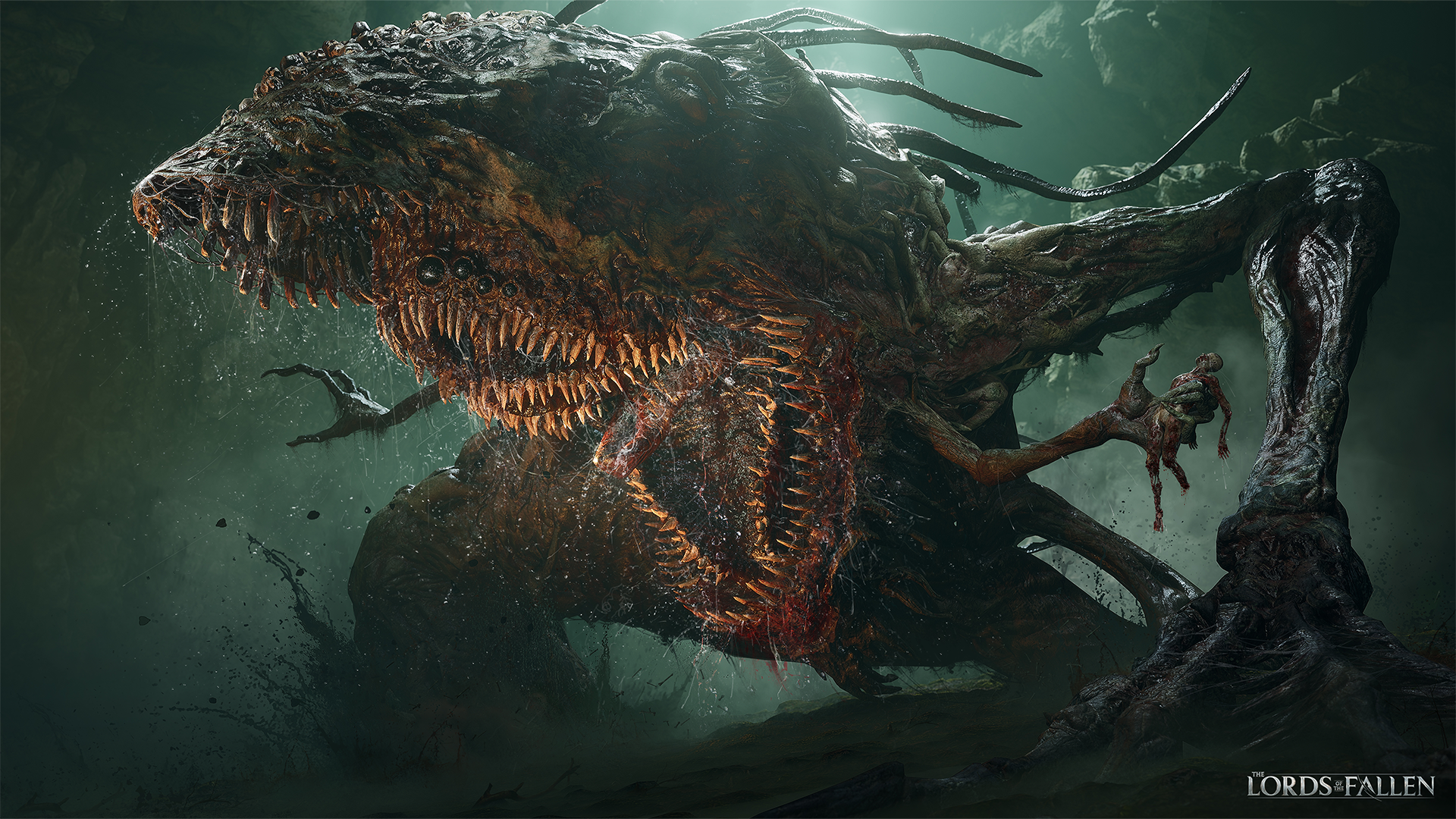
To its credit, Lords of the Fallen adds its own twist to the formula with a Soul Reaver-style overlapping worlds mechanic. The base level is the grim, forbidding and ruinous world of Axiom, whose aesthetic will be familiar to anyone who’s journeyed through Lordran, Drangleic and Lothric. Layered underneath is the grimmer, forbidding-er and uh, ruinous-er world of Umbral, which maintains the same basic environmental structure and enemy layout but is infected with pallid biological growths and a bunch more spooky skeletons.
If you die in Axiom you automatically resurrect in Umbral, and if you die there it’s back to a bonfire. You can willingly enter Umbral at any time with a magic lantern (which also allows you to peer into Umbral by raising it), which is mandatory as there are paths there that don’t exist in Axiom.
This two-worlds system also neatly toys with an aspect of Souls games that isn’t immediately obvious to new players: if you are not being targeted by enemies or near their patrol routes, you are completely safe. These games don’t have a pause function, though many a time I’ve left my warrior standing in the open and taken a phone call, confident nothing would harass me while the game was unattended.
In Lords of the Fallen, that applies in Axiom, but not in Umbral: at first fodder enemies will continually spawn around you, and the longer you spend there the more powerful they will become, though this is balanced by a steadily building XP multiplier. The Axiom/Umbral system isn’t game-changing, but it’s game-improving, and allows Lords of the Fallen to at least attempt a defense that it’s not just copying FromSoftware’s homework.
Small flies in the ointment
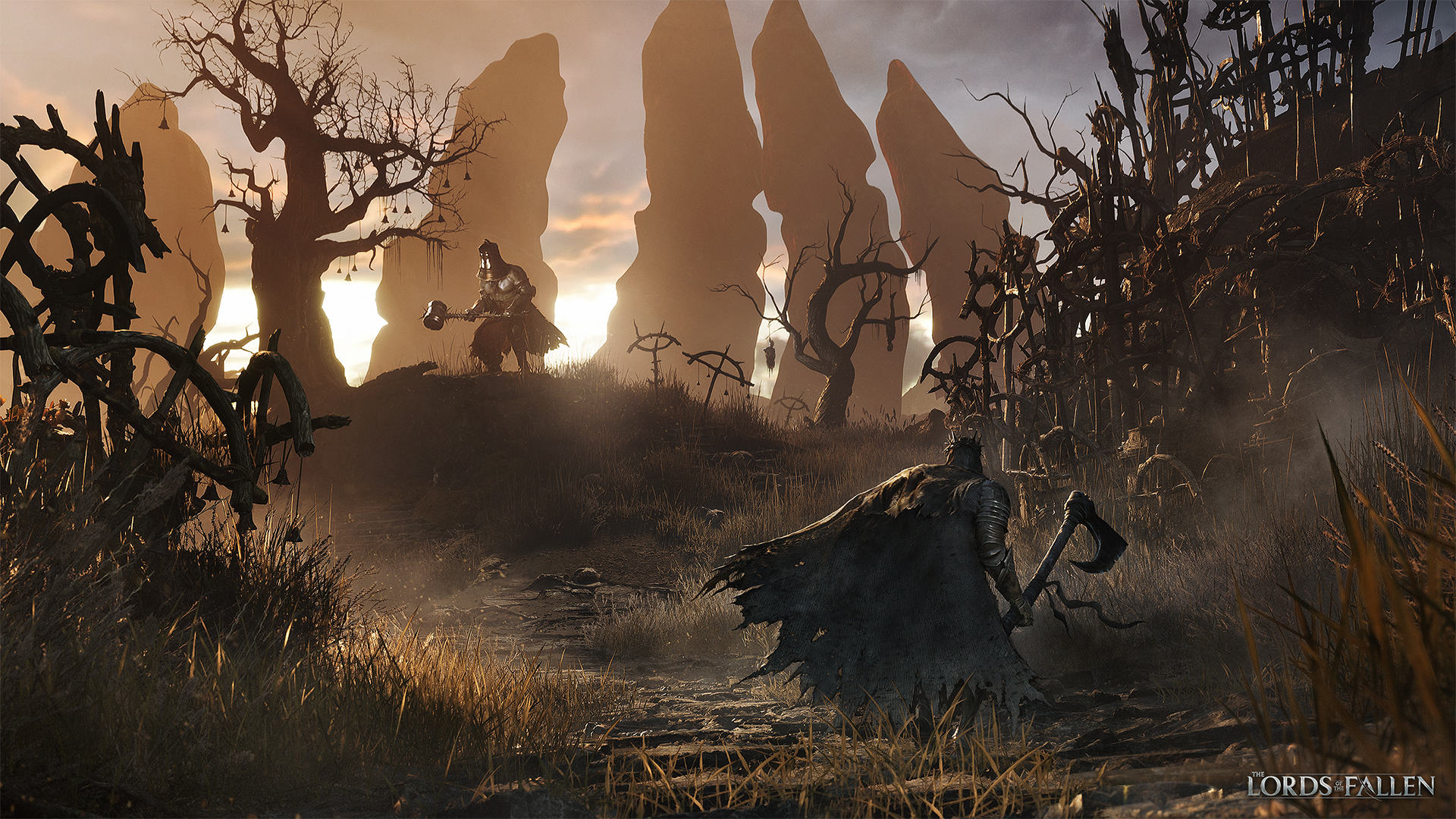
All that said, Lords of the Fallen isn’t perfect. There are some collision bugs, with enemy attacks occasionally passing right through me or my attacks failing to connect with them. This happens often enough that it’s noticeable, but not enough to seriously affect gameplay, and feels like something that can be squashed in an update.
Switching between Axiom and Umbral when overlooking a large environment is also a little wonky, as you’ll see the new Umbral scenery in the distance pop into existence as it’s loaded in. Again, not game-breaking, but something that should be addressed.
Potentially more serious are some annoying level design quirks. Early in the game, I battled my way through wooden platforms dangling over some cliffs. Lords of the Fallen doesn’t have a jump button, mimicking the Souls method of hopping forward while sprinting. In Dark Souls this is generally reserved for reaching hidden items, but here there are honest-to-god platforming sections. They’re awful and shouldn’t be here.
Furthermore, some of these are one-way jumps. At one point I ended up stuck in a dead end with no way to proceed in Axiom or Umbral (as far as I could tell anyway, and believe me I looked). There is a “Homeward Bone” type item that zaps you back to the last bonfire, but it requires a “sacrifice of vigor”. This proved to be all my vigor, and an hour’s careful combat promptly went up in smoke.
None of the above seriously affected my enjoyment, but I’d be surprised to see them in an actual FromSoftware title.
As a side note, I currently have no opinion on Lords of the Fallen‘s PvE and PvP online modes, as they weren’t active during the review period.
Who needs originality anyway?
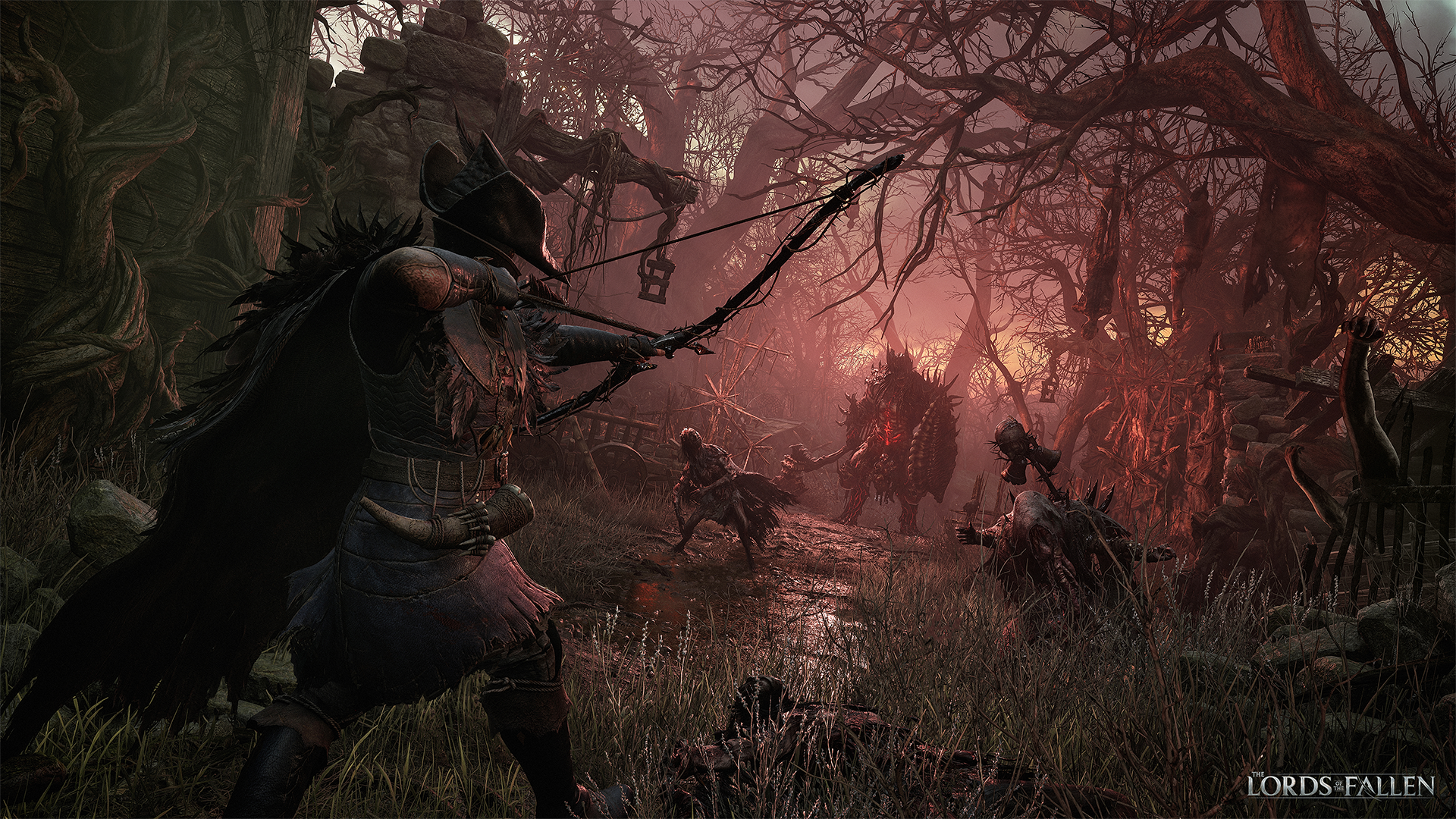
Cards on the table time. As a FromSoftware fan, I was intensely skeptical going into Lords of the Fallen. Many have tried and failed to replicate Dark Souls, with one of the most notable failures being the 2014 Lords of the Fallen. But, somehow, Hexworks have pulled off the impossible and produced a game that, while not the equal of any Dark Souls game, is absolutely worthy of being mentioned in the same sentence.
Yes, Lords of the Fallen is derivative to the point of being game design plagiarism, but with FromSoftware having abandoned this template in favor of Elden Ring‘s grand open world, I’m more than happy that Hexworks has picked up the sword.
This review is based on the PlayStation 5 version of the game. A copy was provided to us for review by CI Games.

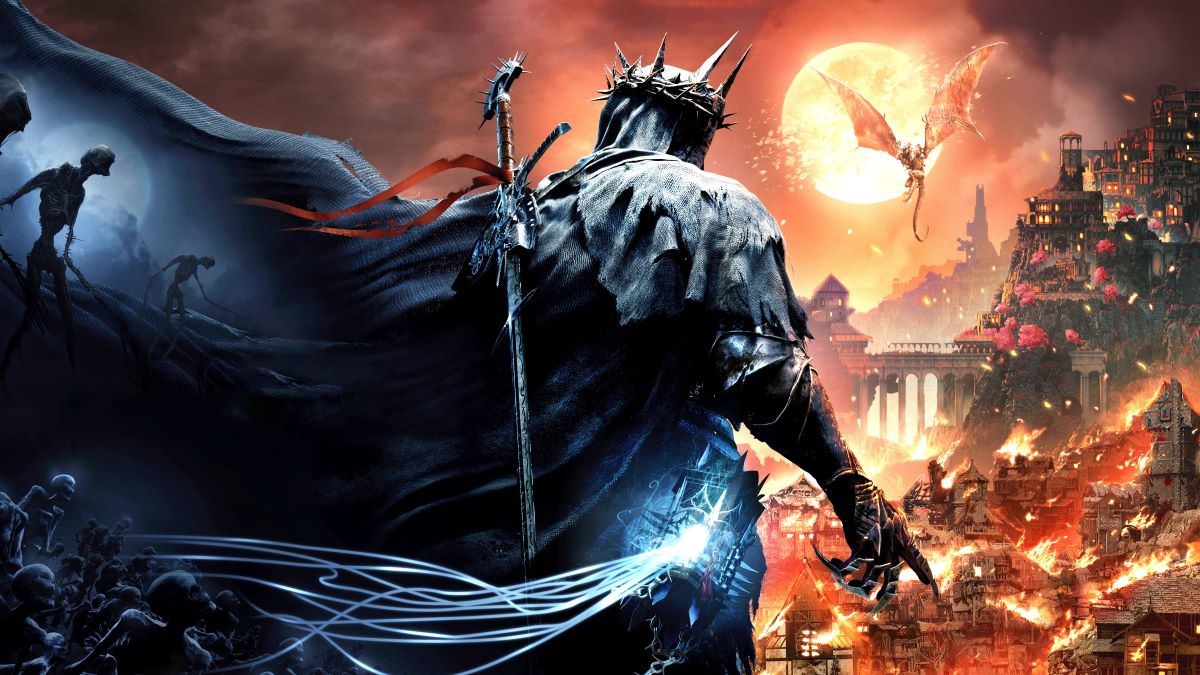









Published: Oct 12, 2023 08:00 am